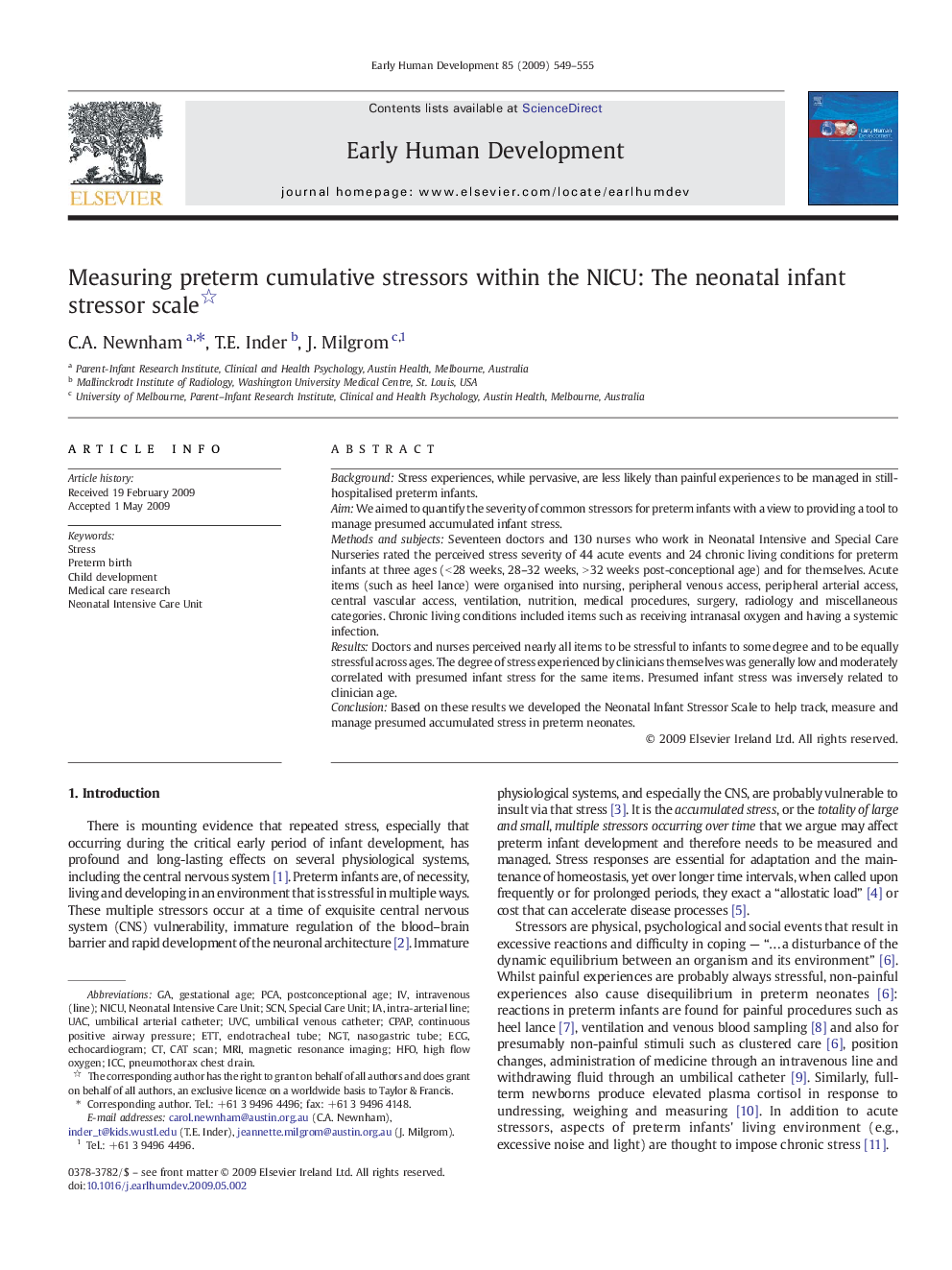| Article ID | Journal | Published Year | Pages | File Type |
|---|---|---|---|---|
| 3918536 | Early Human Development | 2009 | 7 Pages |
BackgroundStress experiences, while pervasive, are less likely than painful experiences to be managed in still-hospitalised preterm infants.AimWe aimed to quantify the severity of common stressors for preterm infants with a view to providing a tool to manage presumed accumulated infant stress.Methods and subjectsSeventeen doctors and 130 nurses who work in Neonatal Intensive and Special Care Nurseries rated the perceived stress severity of 44 acute events and 24 chronic living conditions for preterm infants at three ages (< 28 weeks, 28–32 weeks, > 32 weeks post-conceptional age) and for themselves. Acute items (such as heel lance) were organised into nursing, peripheral venous access, peripheral arterial access, central vascular access, ventilation, nutrition, medical procedures, surgery, radiology and miscellaneous categories. Chronic living conditions included items such as receiving intranasal oxygen and having a systemic infection.ResultsDoctors and nurses perceived nearly all items to be stressful to infants to some degree and to be equally stressful across ages. The degree of stress experienced by clinicians themselves was generally low and moderately correlated with presumed infant stress for the same items. Presumed infant stress was inversely related to clinician age.ConclusionBased on these results we developed the Neonatal Infant Stressor Scale to help track, measure and manage presumed accumulated stress in preterm neonates.
